|
Dunduplex Telegraph Key |
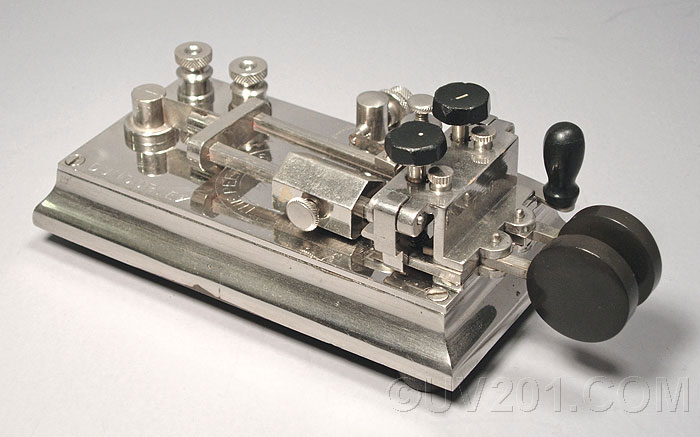 |
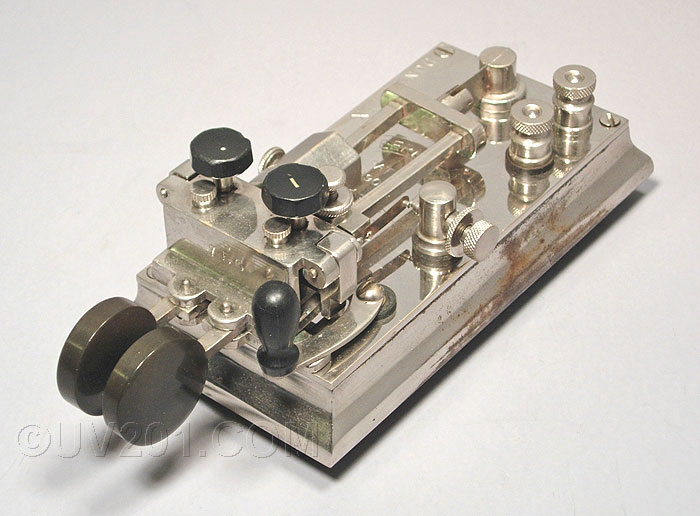 |
| The Thomas J.
Dunn company manufactured telegraph keys between the years 1909 and 1915
in New York City. The key shown here is one of the earlier keys that they produced, and was made in 1909 or 1910. It is marked "The Peerless Key, Pat'd 1909, Thos. J. Dunn & Co. New York", and "Dunduplex". It is a semi-automatic key in which a pendulum vibrating in the horizontal plane operates a set of contacts to produce series of "dots". A conventional contact is used to produce dashes. It is a two paddle design. The left paddle is used to produce dots and the right paddle is used to produce dashes. Unique to the Dunn keys are the two buttons at the top which may be used instead of the paddles. Note the dash and dot markings on the buttons. The two methods of operating the key are the basis for the name "Dunduplex", or "Dunn Duplex". These keys were provided with a metal carrying case which resembles an old style mailbox. These cases are very rarely seen, and it is also unusual to find this key with the buttons in place (they are a press fit). Dunn had been a partner of Horace Martin, the inventor of the Vibroplex semi-automatic telegraph key. During this period, from 1900 through 1902, Martin began work that led to the Vibroplex, which was patented in 1904. After parting company with Martin, Dunn produced his own design which he hoped could be produced without infringing Martin's patent. He filed on Dec. 31, 1908, and was granted patent number 923,035 on May 25, 1909. He began manufacturing his first key design in 1909, which was a smaller, single-lever version of the one shown here. He called it the "Peerless Key". Late in 1909, he modified the design to have a separate operating lever for dashes and dots. The key shown here is an example of the second version. In 1910, a third version was introduced, which appears to be essentially identical to this one, but the Peerless name was dropped, and it was simply known as the Dunduplex. Still later production keys used oval shaped paddles, rather then the round ones on this unit. Eventually, Martin filed suit against his former partner, and the courts ruled in his favor in 1915 and production ended. The base of this key is about 5 1/2 inches long and 3 inches wide. The base is cast iron and most of the other pieces are brass. All are nickel plated. The paddles and knobs are hard rubber. |
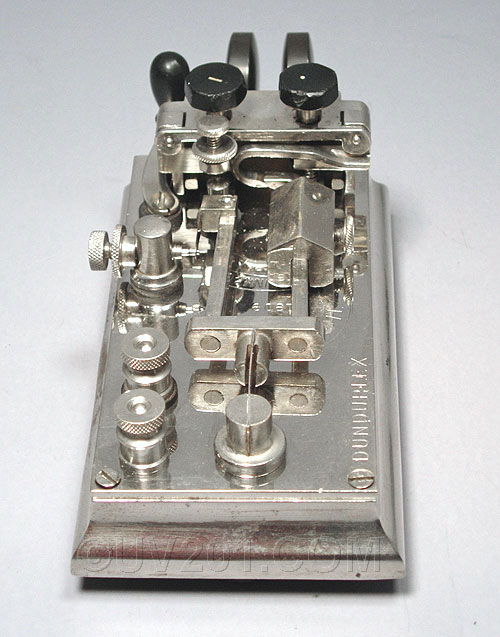 |
| The pendulum is suspended from the post in the center foreground by a strip of spring steel. A weight is clamped to one arm of the pendulum. It may be positioned to set the speed at which dots are produced. Some of these keys seem to have had two weights, so one may be missing from this example. |
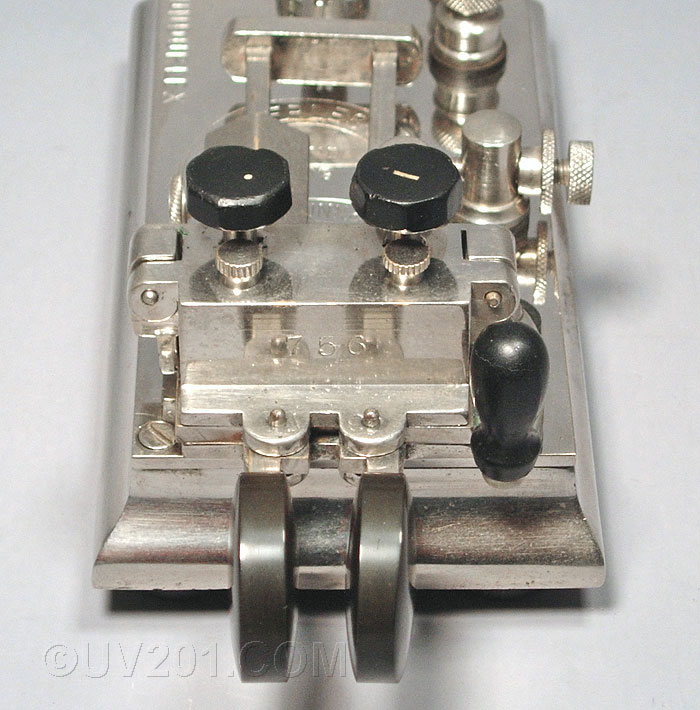 |
| Just in front of the dash and dot buttons are tension adjustments for each function. |
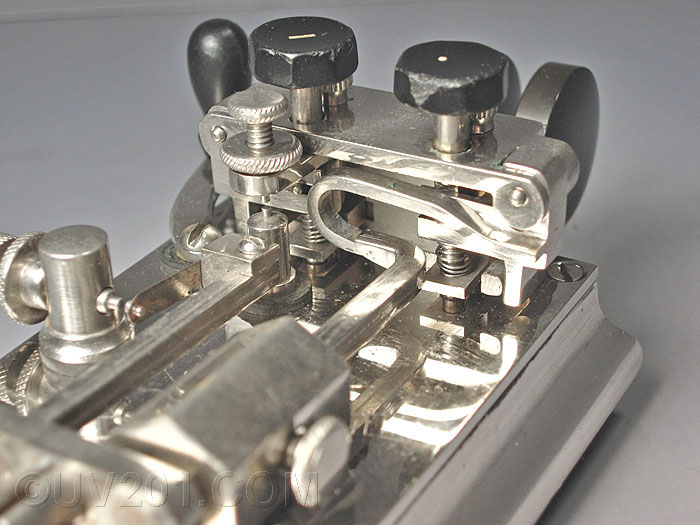 |
| This view shows the mechanism which operates the pendulum. The dot paddle (or button) causes the hook shaped finger to drop down and release the right arm of the pendulum. This gives it a kick to start it vibrating, opening and closing the contacts at the far left. When the paddle is released, the finger again contacts the pendulum, and the vibration stops. Just to the left of center are the vertical dash contacts. |
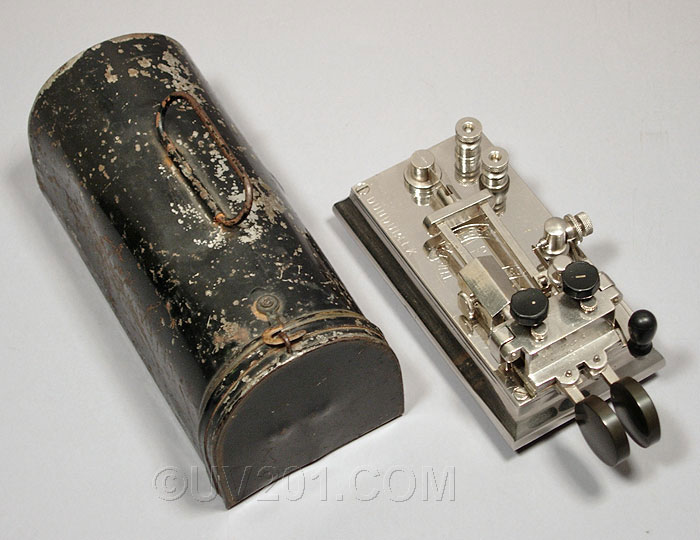 |
| The carrying case is shown here with the key that it housed. The manufacturer's name is stenciled on the bottom. Note the two dents on the cover where the two paddles hit the inside as the key slid back and forth. |
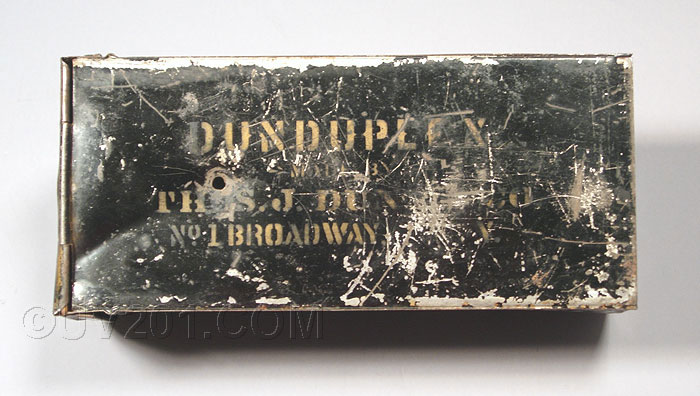 |